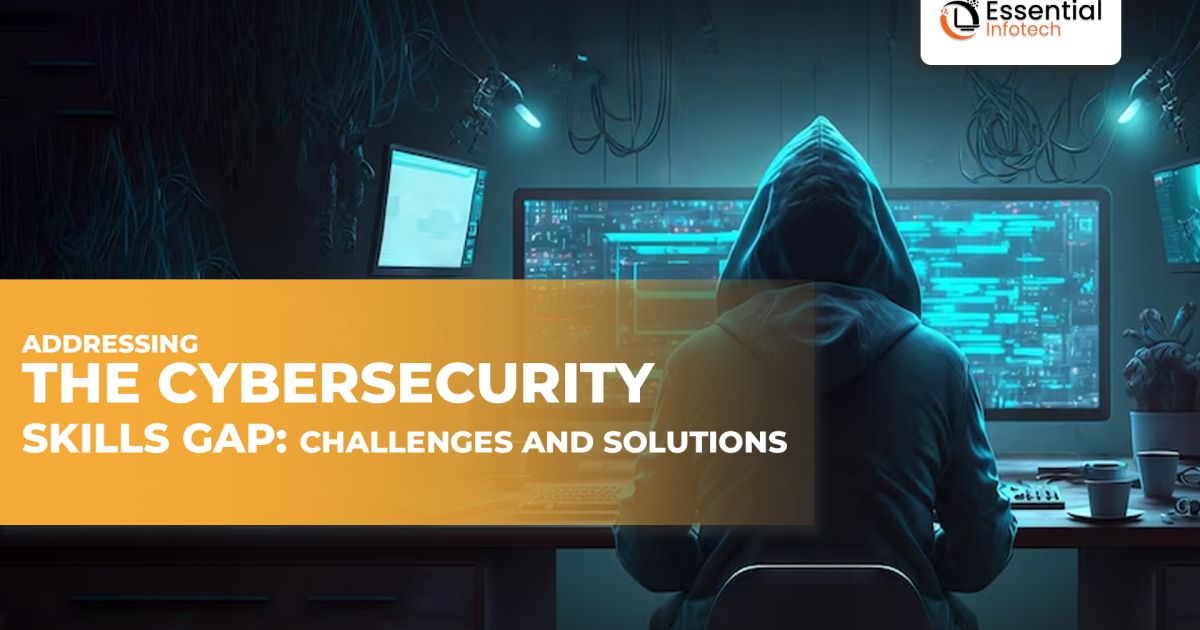

Addressing the
Cybersecurity Skills Gap: Challenges and Solutions
The demand for cyber security specialists is outpacing
the availability of skilled people, which has made the skills gap in
cybersecurity a critical problem for enterprises globally. In the current
digital environment, where cyberattacks are more complex and widespread, closing
this gap is crucial to fortifying defenses, reducing risks,
and protecting private information. In order to solve this pressing problem,
let's look at the difficulties the cybersecurity skills gap presents and
consider possible solutions.
The
Cybersecurity Skills Gap's Challenges
The increasing need for cybersecurity
professionals:
The surge in cyber risks and attacks,
along with the quick digitization of enterprises, has created an unparalleled
need for cyber security experts. Organizations looking to fill cybersecurity positions face
recruitment difficulties and a growing skills gap as a result of the supply of
qualified people not keeping up with the demand.
The dynamic nature of the
threat landscape necessitates that cyber security professionals maintain a broad skill set and stay up to
date on the latest attack methodologies, vulnerabilities, and threats. The
dynamic nature of cyber threats may not be sufficiently addressed in
traditional cybersecurity training programs, which exacerbates the skills gap
and exposes enterprises to attacks.
Ways to Close
the Skills Gap in Cybersecurity
To create a pool of competent workers, funding for cybersecurity education and training programs is crucial. Companies may help current employees grow their careers in cybersecurity by providing them with opportunities for professional development, internal training, and certifications. Partnerships with academic institutions and business associations can also aid in developing a varied talent pool of cybersecurity experts.
b. Hands-On Experience and Practical Training:
Gaining real-world experience is essential to being proficient in cybersecurity methods and skills. Organizations can assist professionals apply theoretical knowledge in real-world conditions by offering hands-on training through capture-the-flag competitions, simulated exercises, and real-world scenarios.
Aside from internships, apprenticeships, and mentorship programs, these programs can also give prospective cybersecurity professionals invaluable practical experience.
Inclusion and diversity
must be embraced if the cybersecurity industry is to close its
skills gap and promote innovation. Employers can use diversity programs to draw
in and keep talent from underrepresented groups, such as women, people of
color, and people from a variety of backgrounds. Organizations can access a larger talent pool and new
insights on cybersecurity challenges by fostering diversity and inclusion.
Artificial intelligence
(AI) and automation technologies can reduce the workload of cybersecurity workers by
automating incident response, threat detection, and regular operations. Through
the utilization of AI-powered solutions for threat
intelligence, security orchestration, and vulnerability management, entities
may optimize productivity, expand their
operations, and enable cybersecurity personnel to concentrate on critical
duties.
Collaborative Efforts and Knowledge
Sharing
a. Public-Private Partnerships:
To solve the
cybersecurity skills gap more broadly, cooperation between government agencies,
businesses, academic institutions, and trade associations is essential. Public-private
partnerships have the potential to boost national resilience against cyber
threats and expand the cybersecurity workforce by facilitating knowledge
sharing, skill development, and resource allocation.
b. Information Sharing
and Cybersecurity Communities:
Establishing forums for
cooperation and information exchange within the cybersecurity community
promotes group learning and the growth of skills. Cybersecurity practitioners can share ideas, best
practices, and threat intelligence through online forums, professional
networks, and communities. This helps them keep
ahead of new threats and improve their skills.
Conclusion
In an increasingly
digital environment, firms looking to safeguard their assets, data, and
reputation face formidable obstacles due to the cybersecurity skills gap. Organizations may close the skills gap, develop a strong
cybersecurity workforce, and fortify
their cyber defenses by funding training and education, offering practical
experience, encouraging diversity and inclusion, utilizing automation
technology, and encouraging teamwork. To create a resilient and secure digital
future, stakeholders from all industries must work together to address the
cybersecurity skills gap.
Keep up with the most recent
advancements and trends in cybersecurity. For other information
on developing cybersecurity skills, best practices, and new threats, check out
our blog.
We Are A Leading IT Company Experienced In Creative And Innovative Development And Design Solutions .